Tour Jean Sans Peur: The Remarkable Medieval Tower in Paris


- SUBSCRIBE
- ALREADY SUBSCRIBED?
BECOME A BONJOUR PARIS MEMBER
Gain full access to our collection of over 5,000 articles and bring the City of Light into your life. Just 80 USD per year.
Find out why you should become a member here.
Sign in
Fill in your credentials below.
Standing back from the street on the north side of Rue Etienne Marcel, in the busy 2nd arrondissement, rises an isolated grey stone tower: the Tour Jean Sans Peur, or Tower of John the Fearless. It is less well-known than the Musée de Cluny, Paris’s official museum of the Middle Ages, but is a gem in its own right. Now seemingly marooned in the nonstop bustle of this quarter between Les Halles and the Bourse, the tower was once part of a palace and estate belonging to the Counts of Artois and, later, the powerful Dukes of Burgundy. Inside, you are treated to a fascinating insight to life in the Middle Ages.
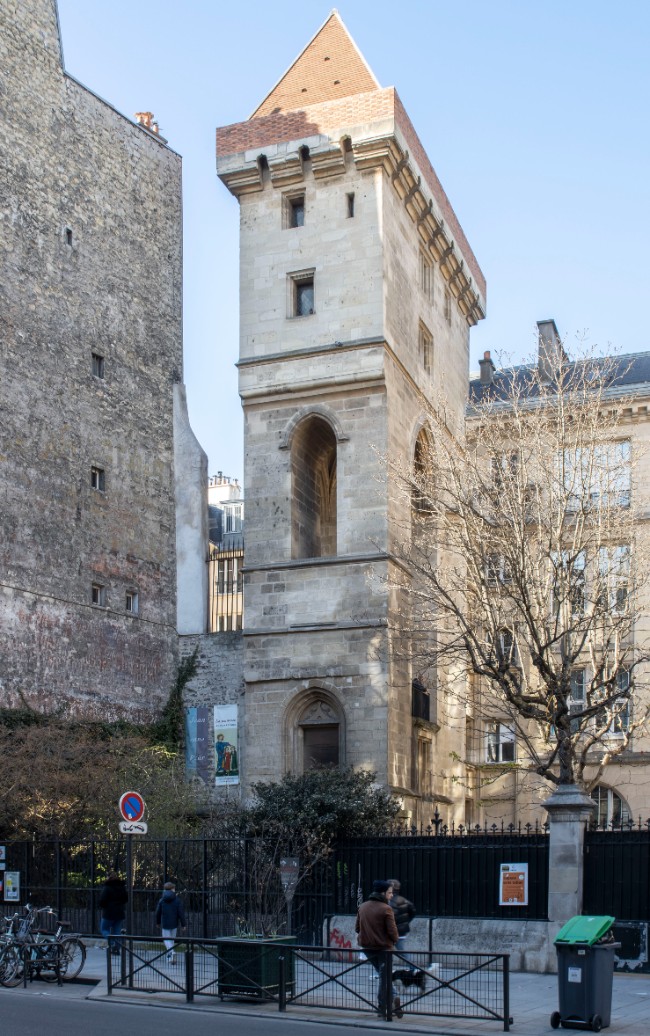
La tour Jean Sans Peur. Photo credit: Arthur Weidmann/ Wikimedia Commons
A hôtel particulier (mansion, or townhouse) was built around 1270 by Robert d’Artois. It butted up against Philippe Auguste’s Wall, at that time a very new fortification and you can still see a tower from the wall in the reception area. While the hôtel stood inside the city, most of the land belonging to it lay outside. Both the hôtel and land were later absorbed into Paris when Charles V built a new wall encircling the Right Bank.
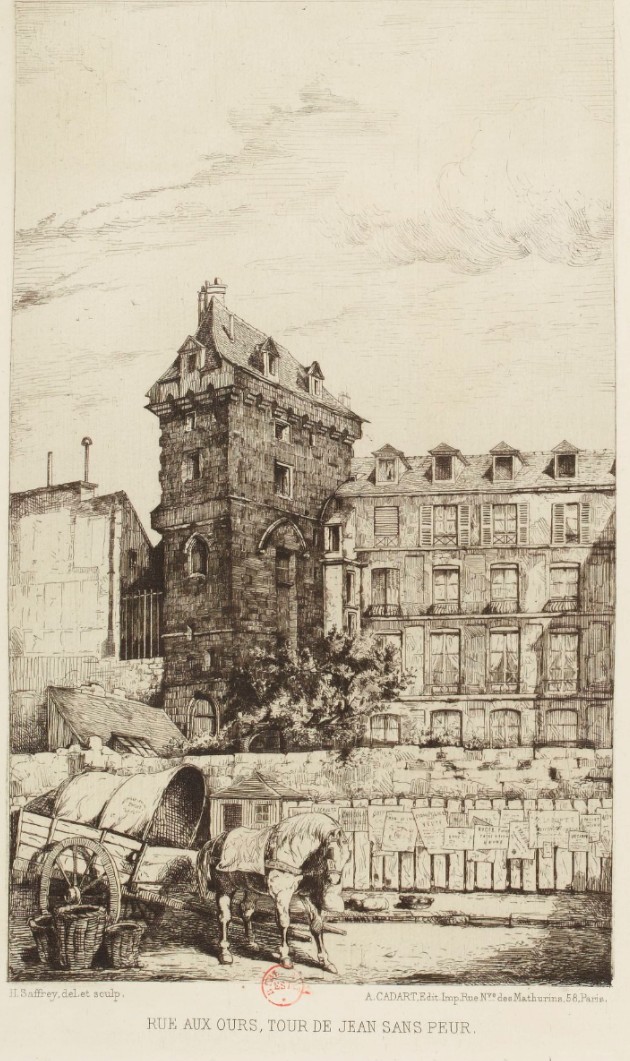
Henri Alexandre Saffrey, Rue aux Ours – Tour de Jean-sans-Peur (eau-forte, 1873). Public domain
It was also around this time that the palace passed to the Dukes of Burgundy through marriage. Throughout the 1390s and early 1400s they fought a bitter civil war against an opposing branch of the royal family, the Armagnacs, to decide who should be king. In 1407 Jean de Bourgogne had the king’s brother assassinated but redeemed himself with a successful military campaign in Flanders, earning himself the nickname of Jean Sans Peur. To celebrate his success, he rebuilt the palace and added a tower. From now on it was known as the Hôtel de Bourgogne.

Jean sans Peur, huile sur chêne, musée du Louvre, début du XVe siècle. (John II, Duke of Burgundy.) Public domain.
The tower was the centerpiece. It housed an impressive spiral staircase which opened into a great hall and a narrower staircase leading to private chambers above. You could step out of the tower directly on to Philippe Auguste’s Wall and walk to Les Halles without being seen from the street. Quite handy since Jean attracted many enemies and he progressively fortified the tower against attack. After his death the palace passed to his son, Philip the Good, who didn’t live there but did hold sumptuous banquets in the garden. Magnificent tents made of silk and velour were erected and tapestries from his native city of Arras hung from the tower walls. His son, in turn, inherited the palace but spent very little time there and when he died without an heir, the palace was taken over by the king.

Main stairway of the tower from the lower floors. Photo credit: SiefkinDR/ Wikimedia commons
The palace and its grounds passed through several hands during the centuries that followed. In 1548 a parcel of land on Rue Mauconseil was sold to the first authorized theater company in Paris. It built the city’s first permanent theater which survived for 140 years, known as the Hôtel de Bourgogne. Eventually, the company merged with the Théâtre Guénégaud after the death of the Guénégaud’s director, the playwright Molière, and in 1680 it became part of the new Comédie Française.
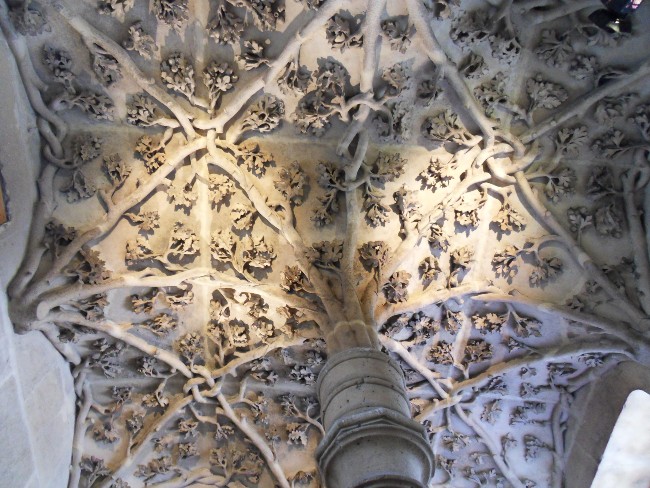
The sculpture at the top of the main stairway, with the intertwined emblems of the family of Jean sans Peur. Photo credit: Chaoborus / Wikimedia commons
In the early 1700s the Hôtel de Bourgogne became a private residence while the tower was turned over to workshops and small businesses. It was still used for this purpose when Haussmann cut the Rue Etienne Marcel through the estate in 1868, forcing the demolition of the ancient palace. A primary school was built on its foundations and only the palace’s western wall survived, which now forms part of the school.
The now-isolated tower finally drew the attention of conservationists and the first restoration works took place in 1893. However, it took another 100 years for the building to be thoroughly restored and largely returned to its medieval appearance. At the same time it was opened to the public.
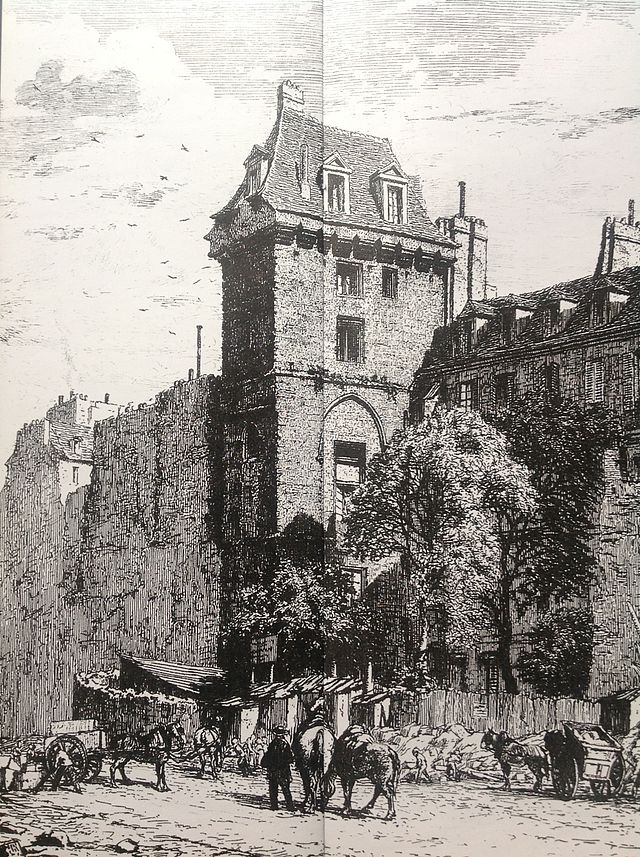
View of the Tour Jean Sans Peur in 1882, after construction of rue Etienne Marcel in 1867; drawing by Charles Yriarte in “History of Paris” (1882). Public domain
The interior is one of the best-preserved survivors of the Middle Ages still existing in Paris. The wide spiral staircase rises to the Great Hall ending in a beautifully vaulted ceiling in hard limestone, a masterpiece of 15th-century stone carving of oak, hawthorn and hops, representing the emblems of Jean and his family. From here a narrower staircase rises to the private chambers of Jean Sans Peur. He was so paranoid about being murdered in his bed that the first room was furnished identically to his own – except that this was for his hapless squire. The idea was that would-be assassins would kill his servant instead of Jean! His own room was on the floor above.
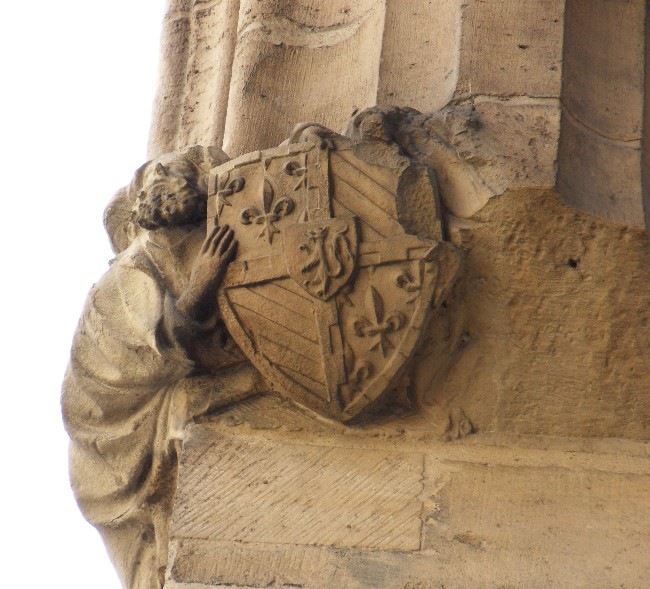
An angel carrying Jean sans Peur’s coat of arms. Photo credit: Chaoborus / Wikimedia commons
The squire’s chamber is part-furnished as Jean’s would have been during his life. It’s the details of everyday life that fascinate and the latrine gives you an idea of the comfort enjoyed by the noble classes. There were two – one for each bedchamber -and one has been fitted out as it would have looked in the 1400s. It was the last word in luxury: heated ( it backs on to the chimney), a floor covered in rush matting (no cold feet when you have to “go” on a winter’s night), and the walls are covered in cloth, also for insulation. A washstand with basin and jug provided for ablutions. The actual plumbing is just a simple drop to the ground but the fact that there is a window for ventilation and a proper seat would have made this a pretty comfortable room.
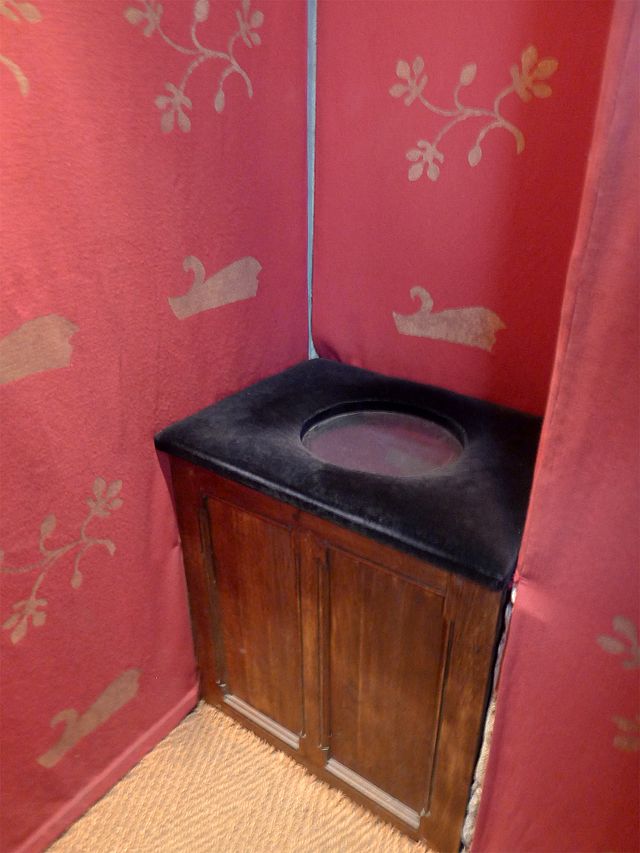
Latrine. Photo credit: Mbzt/ Wikimedia Commons
Indeed, a noble or king’s bedchamber was far more than a room for sleeping. He would receive guests, messengers and official envoys there, and conduct his daily business. It was quite common to do all this while actually in bed. This would be surrounded by curtains to keep out drafts and provide privacy, although the canopy of a typical four-poster bed came later. Tall wardrobes, or armoires, didn’t exist and clothes were kept in massive chests. Chairs were throne-like and a popular piece of furniture was a solidly built oak bench with a reversible back which enabled the sitters to either face the fire or have their back to it.

The interior of the upper chamber in the Tour Jean sans-Peur, with a figure of Jean-sans-Peur in front of the fireplace. The door on the left leads to the latrine. Photo credit: SiefkinDR / Wikimedia Commons
At the top of the tower is a much simpler room, possibly used by the watchman. This evokes more than any other the age of the tower. You are under the rafters, most of which are original beams and which carry that unique dusty smell of ancient wood.
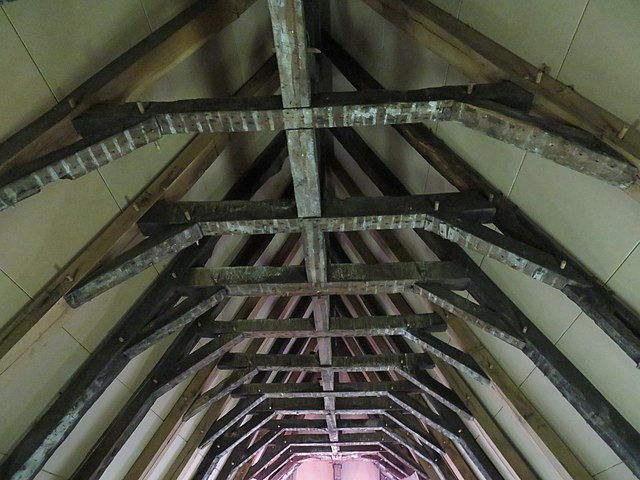
Original roof beams in the Tour Jean-sans-Peur. Wikimedia commons
Each room contains entertaining and very informative wall panels and display cabinets explaining everyday life for a medieval nobleman, as well as the particular history of Jean Sans Peur and his descendants. Although these are in French there are also summaries in English. Mannequins display the fashions of the time and there is a balcony off the Great Hall where you can still see masons’ marks in the stone. Back in the reception area, steps lead down below the ground floor where an outdoor display traces the architectural history and existing remnants of the Middle Ages in Paris. Temporary exhibitions illustrate topics such as attitudes towards health and medical practices – demolishing some myths in the process.
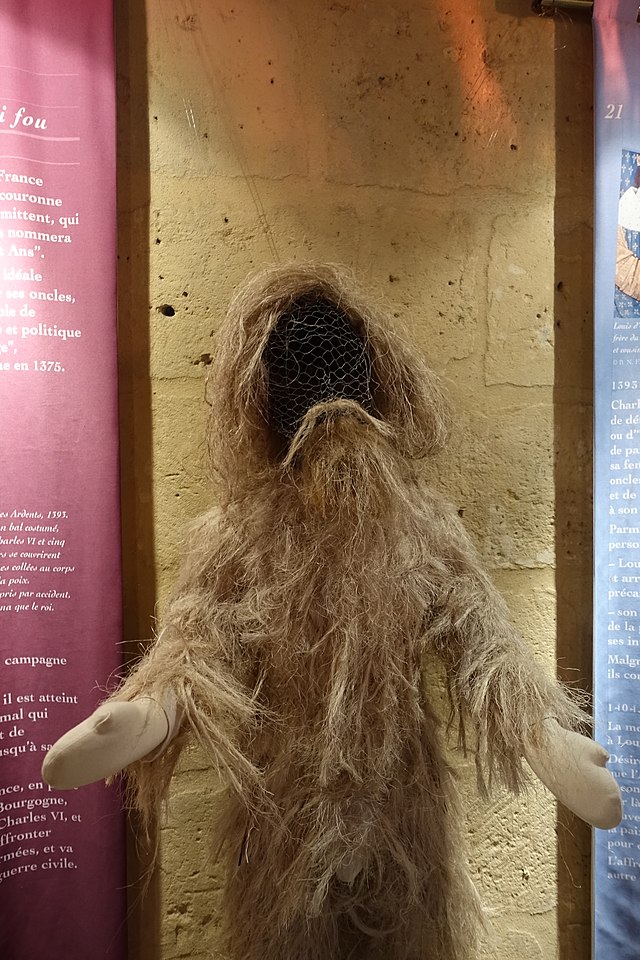
The famous costume of the “homme sauvage,” worn during the notorious medieval ball when a fire broke out and killed the costumed attendees. Charles V was able to narrowly escape. Wikimedia commons
The entrance fee is only 6€ and for that you get a fascinating insight into life in the Middle Ages. Maybe not for a first trip to Paris, but if you are looking for something a little offbeat and unusual, it is well worth a visit.
DETAILS
20 Rue Étienne Marcel, 2nd
Tel: +33 (0)1 40 26 20 28
Open from Wednesday to Sunday from 1:30 p.m. to 6 p.m.
Lead photo credit : Detail of the Tour Jean-sans-Peur. Wikimedia Commons
More in Burgundy, duke of burgundy, jean de bourgogne, Les Halles, middle ages, Musée de Cluny, phillippe auguste, robert d'artois, Tour Jean Sans Peur


